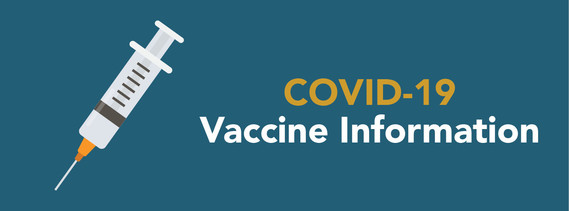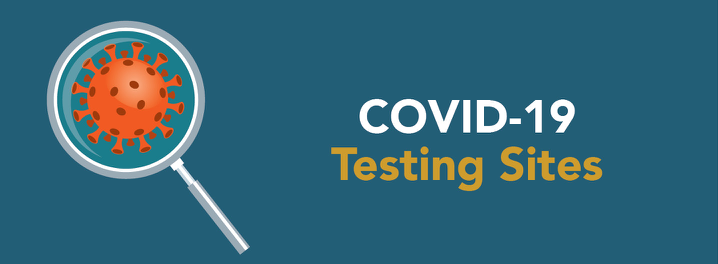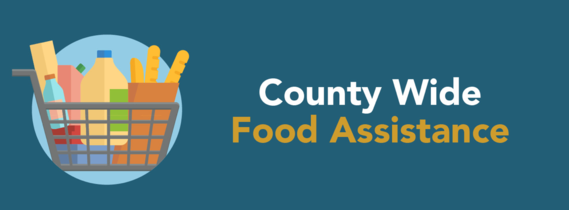New CDC Guidelines Allow Fully Vaccinated to Visit Each Other
The Centers for Disease Control and Prevention (CDC) has issued its first set of recommendations that now allow people who are fully vaccinated to gather with each other without masks.
This new guidance – which is based on the latest science – includes recommendations for how and when a fully vaccinated individual can visit with other people who are fully vaccinated and with other people who are not vaccinated. CDC will update these recommendations as more people are vaccinated and additional scientific evidence becomes available.
In addition to being able to visit with other fully vaccinated people indoors (without wearing masks or staying 6 feet apart), the new guidelines also permit non-masked visits with unvaccinated people from one other household indoors if everyone in the other household is at low risk for severe disease.
This would allow, for example, grandparents to visit with their healthy grandchildren or the home of a healthy friend, without having to where a mask or staying 6 feet apart.
Someone is considered “fully vaccinated” two weeks after receiving the last required dose of vaccine. Although vaccinations are accelerating, at this point only 6.1% of San Bernardino County residents have been fully vaccinated with a COVID-19 vaccine.
“While we can all be encouraged and pleased that this is a positive step, we have to also recognize that we still have some distance to go,” said County Director of Public Health Corwin Porter. “Until then, we are asking everyone to continue to wear masks, socially distance, wash their hands often, get tested, and avoid unsafe social gatherings to protect the large number of people who remain unvaccinated.”
In fact, even with a vaccine, the CDC recommends that fully vaccinated people continue to wear a mask and keep distance when in public, when visiting with unvaccinated people from multiple other households, and when around unvaccinated people who are at high risk of getting severely ill from COVID-19.
County Working with Faith Groups to Expand Vaccination in African American Communities
“We will all suffer if we do not work together.” This was the honest and succinct observation shared by Rev. Steven Shepard, leader of the St. Paul African Methodist Episcopal Church in San Bernardino, at a press conference on Friday announcing a partnership between the County, Loma Linda University Health and two faith-based groups representing African American churches.
San Bernardino County is expanding its partnership with Inland Empire Concerned African American Churches (IECAAC) and Congregations Organized for Prophetic Engagement (C.O.P.E.) to substantially increase vaccination rates in the local African American community. Mobile COVID-19 vaccination clinics will be hosted this month at churches throughout the county.
Rev. Samuel Casey, executive director of C.O.P.E., says that he and other religious leaders are working hard to convince members of the Black community to overcome any reluctance to get vaccinated for COVID-19. He believes churches can play a crucial role in this effort for one simple reason: they’ve earned trust in the community.
“Usually, when county officials engage communities of color, the expert never looks like the people they are talking to,” Rev. Casey said. “You need trusted voices from within those communities to explain these things. When Black faith leaders speak, the community will listen.”
Last June, the County Department of Public Health, along with Loma Linda University Health, began teaming with IECAAC to expand access to free COVID-19 testing to help reduce the spread of the disease and keep African American community members safe. DPH and LLUH are now working with these same churches to establish mobile vaccination clinics at trusted sites in their local communities.
“So far we’ve administered vaccines to almost 270,000 residents and we’re committed to vaccinating everyone in our county,” said County Board of Supervisors Chairman Curt Hagman. “However, the percentage of African American residents who have been vaccinated is well below their overall percentage of the population, so we are taking steps to overcome that disparity. We want to make sure that no one is left behind or unable to access the medical care they need.”
If it weren’t for mobile vaccination clinics and Black congregations working to bring them into their communities, many African Americans in the county would lack access to vaccines, said the Rev. Shepard. He said he was pleased that public health officials and hospitals are reaching out to help underserved communities.
“My hope is that this partnership will bring a better day for our community and healing, which we all need,” Rev. Shepard said.
Some community members who have already received a vaccination are encouraging others to get inoculated.
"My first shot went pretty smooth. There was no after effect," said Ensley Howell in an interview broadcast by NBC Los Angeles. Howell says he's looking forward to his second shot, and he's hoping others will also get vaccinated. "It's vital for us to get back to a normal life. We need it," he said.
Churches scheduled to have visits by the mobile clinic include Burning Bush Church, Juniper Ave/ New Life Christian, Ecclesia Christian Fellowship, Life Changing Ministries, 16th St Seventh Day Adventist Church, Loveland Fontana,
Transformation Church, and Immanuel Praise Fellowship.
VIDEO: Nothing But Clean Laps at Speedway Second Dose Event
Almost 3,000 seniors received their second dose at a problem-free vaccination super site event held at the AutoClub Speedway last week. The successful traffic mitigation plan resulted in no backups on surface streets.
County Now Vaccinating Food and Agriculture Workers
The County is now accepting vaccination appointments for food and agriculture workers.
Workers in the food and agricultural industries can visit the vaccination section of the County’s COVID-19 website to see about scheduling an appointment. Eligible persons should also remember that County-run vaccination sites are not the only places to receive a vaccine, so they should check with pharmacies, State-run sites, and their own health care providers about vaccines.
The food and agriculture industries employ a wide variety of workers, such as those supporting groceries, pharmacies, convenience stores, animal services and other retail stores that sell food or beverage products. A partial list of those eligible during this phase include:
- Workers supporting restaurant carry-out and quick serve food operations, including food preparation, carry-out and delivery food employees
- Food manufacturing employees and their supplier employees, including those employed in food ingredient production and processing
- Farmers, farm and ranch workers, and agribusiness support services
- Employees and firms supporting food, feed, and beverage distribution and ingredients used in these products
- Workers supporting the sanitation of all food manufacturing processes and operations
- Workers supporting the growth and distribution of plants and associated products for home gardens
- Workers in cafeterias used to feed workers
- Workers in animal diagnostic and food testing laboratories
- Workers who are essential for food assistance programs
- Employees of companies engaged in the production, storage, transport, and distribution of chemicals, medicines (including cannabis), vaccines, and other substances used by the food and agriculture industry
- Animal agriculture workers including those employed in veterinary health and related transportation services
- Employees engaged in the manufacture and maintenance of equipment and other infrastructure necessary for production and distribution
- Workers at animal care facilities
For considerably more detailed information on food and agriculture workers now eligible to receive a vaccination, please visit the State’s COVID-19 website.
Thinking of Social Gathering? Consider Getting Tested First
While most of the County’s recent COVID-19 focus has been on launching our vaccination campaign, residents are reminded not to forget the importance of getting tested for the virus, especially if planning to spend time with extended family or friends.
Public health rules allow for gatherings of up to 12 people from no more than three households (including your own). But in advance of any such gathering, health officials strongly encourage all individuals to get tested to give everyone valuable piece of mind.
This means that if a group is planning to get together for a birthday party, take a trip to a winery or a weekend ski trip, it makes a lot of sense for everyone to take advantage of free, convenient testing in the days prior to the event so that everyone in the group can feel comfortable knowing they are safe.
“Getting tested is especially important if you are coming in contact with people outside your immediate household,” said County Public Health Director Corwin Porter. “Our vaccination program is expanding steadily, yet it’s still essential for everyone to remain vigilant. You absolutely do not want to be the one who spreads the virus to others — especially when we’re making such excellent progress on vaccinations.”
Fortunately, testing is widely available, and there are numerous testing sites located throughout the County, so securing an appointment is not difficult. Testing is available to everyone (including those without symptoms), a doctor’s prescription is not required, and testing is free. Results are shared within about 48 hours.
For more information on testing, and to schedule an appointment, please visit the testing section of our COVID-19 website: https://sbcovid19.com/testing-sites/
Latest Stats
288,045 Confirmed Cases (up 0% from the previous day)
3,180 Deaths (up 0.1% from the previous day)
2,549,741 Tests (up 0.2% from the previous day)
For more statistics from the COVID-19 Surveillance Dashboard, click the desktop or mobile tab on the County’s sbcovid19.com website.




|